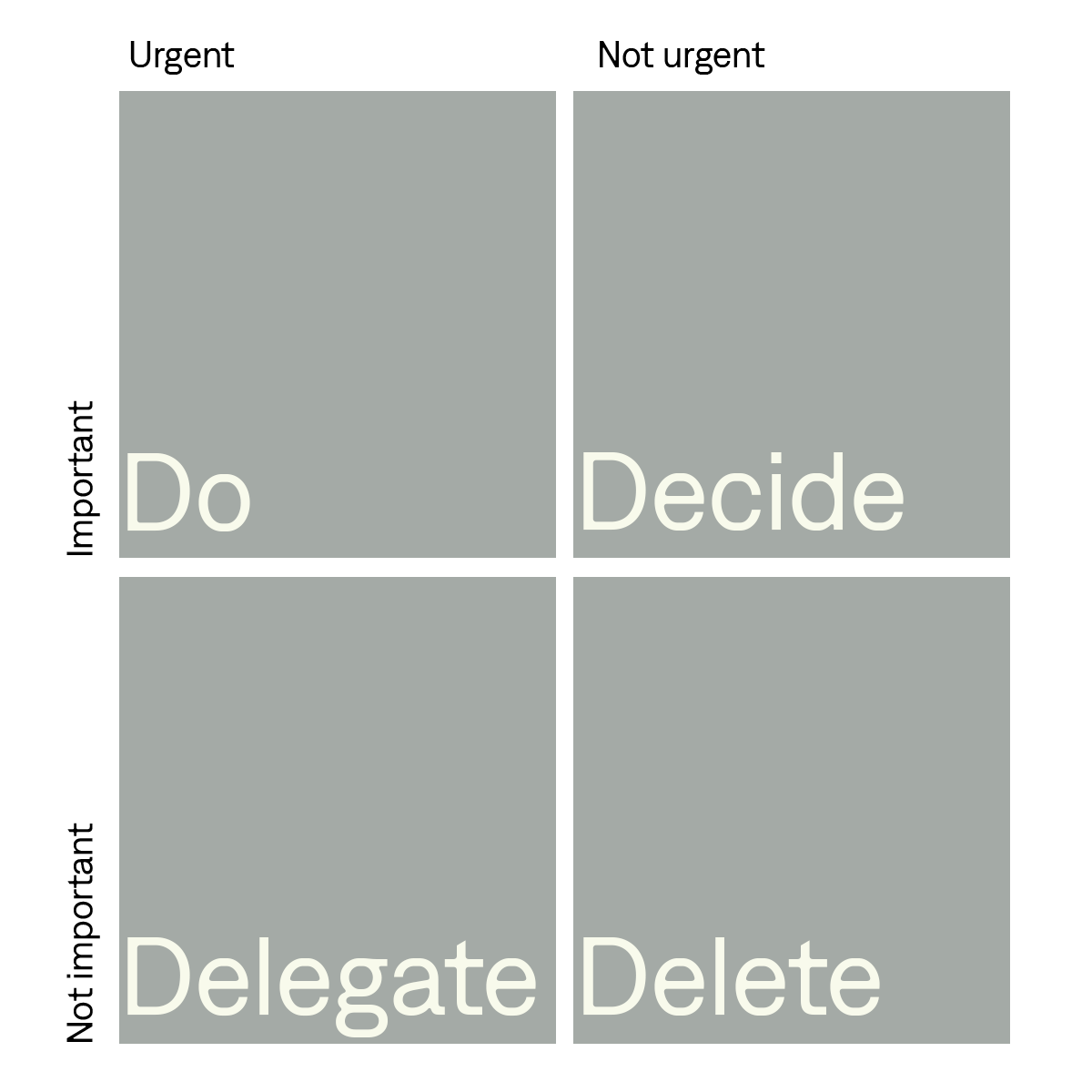Every school marketer knows what it feels like to get pulled in a million different directions. That’s why strategic planning is so critical. Planning well has a compounding effect: it helps you stay productive on the tasks that matter most to improving outcomes for the school, which in turn wins you more time to invest into planning and executing.
The start of a year is a perfect opportunity to engage in some basic strategic planning to brainstorm and prioritise your activities for the year ahead.
Here is a seven-step process to help you plan your school marketing priorities in 2024:
1. Clarify your strategic goals and expectations
It’s crucial to align your marketing efforts with your school’s overarching strategic objectives and any specific targets or expectations you’ve been set. Write these down so that they are always visible.
I’m a firm believer in these objectives becoming the lens through which you make every decision. Having them always visible will help you internalise them.
If you’re unsure about strategic objectives, consider having a conversation with your principal or direct report. Understanding expectations is crucial to ensuring that your work is effective and time is well spent.
2. Brainstorm a list of actions
In light of these, brainstorm a list of actions. They can be big, like a rebuild of the school website, or small, like scheduling social media posts in advance. Where possible, assign each action item three pieces of information (we’ll use all three of these attributes to create a final list of priorities):
- Potential impact
- Urgency (or risk of not doing)
- Budget/cost
3. Connect actions to a strategic goal
Once you have your list, the next step is to attribute each to a specific strategic goal. This gives the tasks context, and helps you to visualise how your tasks are working towards the broader goals of your role/the school.
If you find that your list is heavily weighted towards one or two strategic goals, consider bolstering the others with specific tasks/projects to bring more balance to your list.
Some tasks may not fit neatly into a strategic goal. If so, I would strongly suggest striking them off the list for now. There are so many things to do in your role and your time is precious–being ruthless about what you spend your time is critical to your ability to do impactful work (not to mention your wellbeing).
4. Find your highest-impact projects using an Eisenhower Matrix
Using all the actions you’ve written down, use an Eisenhower Matrix to help you sort through and find the highest priority projects to work on. In an Eisenhower Matrix, actions are categorised based on their urgency and impact.
Using a diagram like the one shown in the image below, assign each of your actions to a box.
- High impact and urgent
These are tasks that require immediate attention and have a significant impact on your goals. - High impact but not urgent
These tasks contribute to long-term objectives but may require a longer time for implementation. - Low impact but urgent
These tasks are often the ones that take up most of your time day-to-day. Highlighting them will help you avoid letting this tasks block you from more impactful activities. - Not impactful and not urgent
These tasks are low-priority and should be avoided or delegated if possible.

Using an Eisenhower Matrix helps you avoid getting stuck in busy-work (urgent but low impact or not urgent and low impact) wherever possible and focus on high-impact, high-return actions.
I see this in school marketing so often; the day-to-day demands restrict your ability to implement the most important work.
I can’t emphasise enough how important it is to start owning your time and prioritising these highest impact tasks.
High-impact actions are often connected to your key touchpoints, such as your website homepage or school tour booking page. Think: optimising your content strategy with templated communication, refining brand messaging or building integrated forms on your website.
Prioritising high impact actions produces compounding results. The benefit isn’t just short-term, it’s ongoing.
5. Move unfeasible projects to the ‘parking lot’
Now that you have refined your projects/tasks using the Eisenhower Matrix, it’s almost time to start crafting your final priority list.
Work through the rough costings for each of your highest impact tasks. Are they feasible in the next 12 months?
Remember that feasibility is more than just budget. It also needs to consider the appetite amongst the school community, executive, Principal and board. Sometimes even the most impactful projects need time to gather the wider support required to execute.
If you have some enticing projects that just don’t seem feasible, think about ways of breaking them down into a smaller tasks. For example, if you’d love to implement a new CRM to handle all of your enrolment enquiries, but the budget has no room until next year, could you:
- Start the research and onboarding process with your CRM provider now?
- Start mapping out your enrolment journey so that you’re ready to migrate as soon as budget becomes available?
- Invest in a more limited version of the CRM software so that you can start onboarding your admissions team now?
Some projects, no matter how good they look on paper, just don’t add up right now. Move these projects to a ‘parking lot’ or ‘dreams’ list. You don’t want to throw away good ideas, even if they’re not feasible. Keep dreaming and talking about this list with your principal, business manager and team. You never know when an opportunity might open up, and you want to be ready to jump if one does.
6. Build your priority list
At this point, you should have a well-considered shortlist of high impact actions and a longer list of low impact tasks. Use this curated list to start building out your priority timeline for the upcoming year.
7. Leverage external support
As you review your finalised priority list, you’ll probably see important tasks that feel a little daunting. External support from a partnership-model like I provide here at Bolsta Digital can be brilliant way of bolstering your own output. Two are better than one!
External support can help you streamline processes and achieve your goals more efficiently.
Bolsta Digital offers a range of services, including digital strategy, coaching, and web design, to support school marketing managers execute their strategic priorities.
As you embark on another year of the highs and lows of school marketing, spend the time to plan and prioritise. You won’t regret it.
By aligning your activities with your school’s objectives, leveraging strategic frameworks like the Eisenhower Matrix, and embracing external support when needed, you will optimise your marketing efforts and drive meaningful results.
Bolsta Digital is committed to empowering school marketing managers with the tools and resources they need to succeed in today’s competitive landscape. Book a call with us today to learn more about how we can support your school’s marketing objectives and elevate your brand and digital presence.
